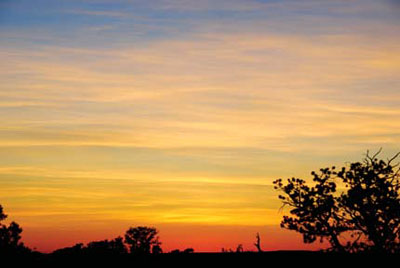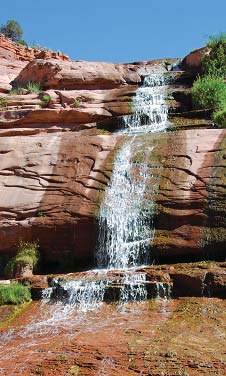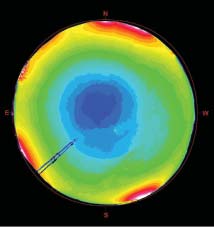Many national parks in the Southern Colorado Plateau Network (SCPN) contain large areas of wilderness, where dark night skies and natural soundscapes are important human values. Dark night skies, which depend upon the visibility of stars and other natural components, are diminishing resources in several park units because of anthropogenic activities. Natural soundscapes—that is, the natural sounds of wildlands—are degraded by sounds caused by humans or human technology.
Increasing population density and consequent increases in traffic, development, overflights, and other activities are causing direct and indirect effects on night skies and natural soundscapes, even within remote wilderness settings. Monitoring night skies and natural soundscapes will provide further insight into changes that affect both ecological integrity and the human values offered by wildlands.
Long-term Monitoring

C. Lauver / NPS
Current plans call for monitoring of night skies or natural soundscapes in 12 SCPN parks. Night skies are monitored with cameras that record background-brightness levels. Individual photos are then joined together to show a panorama of sky brightness at a site. Natural soundscape condition is monitored with audio-recording devices that detect and measure the kinds and time periods of natural and anthropogenic sound that occur. Then, an observer listens to the recordings to determine the time during which a targeted sound is audible (referred to as the “percent- time-audible” method). The frequency with which night skies and natural soundscapes will be monitored has not yet been determined.
| Network park units where dark skies or natural soundscapes will be monitored | |
| Bandelier NM | Grand Canyon NP |
| Canyon de Chelly NM | Mesa Verde NP |
| Chaco Culture NHP | Navajo NM |
| El Malpaís NM | Petrified Forest NP |
| El Morro NM | Rainbow Bridge NM |
| Glen Canyon NRA | Wupatki NM |
|
NHP = National Historical Park; NHS = National Historic Site; NM = National Monument; NP = National Park; NRA = National Recreation Area |
|
Management Applications

Night Sky Team / NPS
With more than 750,000 hectares designated or proposed as wilderness, dark night skies and natural soundscapes are important natural resources for many SCPN parks. As urban development and associated human activities alter natural viewsheds and contribute to haze and noise pollution at local and regional scales, artifi cial light sources can impair dark night skies for up to 160 kilometers. Natural soundscapes are primarily aff ected by vehicular traffic. The first few years of monitoring data will be used to establish current conditions; the focus over the long term will be to detect trends in the condition of these resources. Over time, monitoring data will provide park managers with the information they need to work with park staff, neighboring communities, and regional leaders to address light and noise-pollution issues.
Contact

Night Sky Team / NPS
Chris Lauver, Chris_Lauver@nps.gov
Prepared by Southern Colorado Plateau Network Inventory and Monitoring Program, 2007.
Tags
- bandelier national monument
- canyon de chelly national monument
- chaco culture national historical park
- el malpais national monument
- el morro national monument
- glen canyon national recreation area
- grand canyon national park
- mesa verde national park
- navajo national monument
- petrified forest national park
- rainbow bridge national monument
- wupatki national monument
- swscience
- american southwest
- southern colorado plateau
- scpn
- monitoring
- project
- soundscapes
- night skies
- engaging with the environment
- jmrlc
- natural resources
Last updated: January 12, 2023






